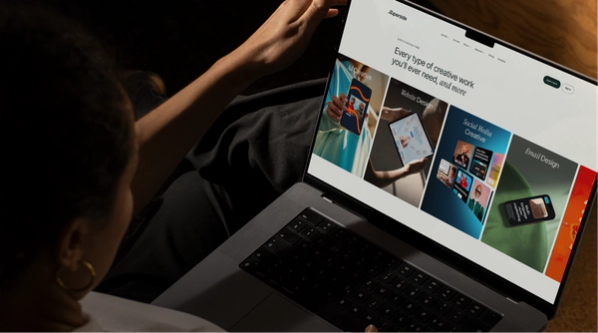
Numbers don’t lie.
As statistics for video viewership continue to skyrocket each year, there’s no doubt that brands without a solid video marketing strategy will get left behind.
With 91% of consumers saying that they want to see more online video content from brands, there’s never been a better time to double down on video production.
But let’s be honest: video marketing can get pretty complicated. That’s why we’ve created this in-depth guide to help you use video marketing to skyrocket your company leads.
Whether you’re struggling to build a successful video strategy or simply want to become better at making videos, our comprehensive guide is about to make your life so much easier.
What Is Video Marketing?
Let’s start with the basics.
Video marketing focuses on using video content to promote a brand, product or service primarily on digital platforms.
This is done to raise brand awareness, increase engagement and drive sales for a product or service.
The importance of stressing this is that video marketing isn’t just about a YouTube ad or a recording of an event—it should be far more strategic, and often requires the expertise of video marketing agencies to assist your brand in achieving this.
Videos such as testimonials, demos, how-to guides, expert interviews, and animations are just a fraction of the capabilities you have today to boost your brand using different types of videos. This is the decade of video marketing, and it is high time you made it this top priority of your content team.
Read More: Not Your Typical Guide To Video Marketing
Benefits of Video Marketing
Video marketing allows your viewers to quickly gain an in-depth understanding of a brand in a faster, more efficient way than other types of content.
Moreover, videos are far more popular on social media these days. TikTok has changed the marketing game forever, and it’s time for your business to capitalize on this.
Fun fact: Recent research found that 64% of consumers globally made purchases after looking at marketing videos on social media.
When video marketing is done effectively, it can generate organic traffic for a brand’s website - optimizing videos by adding SEO keywords to titles and descriptions can increase ranking on search engines.
Videos that directly address customer’s challenges will ensure that viewers spend more and also supercharges SEO.
Case Study Spotlight: How Bolt Used Superside to Boost Their Video Rebrand Strategy
Bolt sent Superside a high-stakes request for a brand awareness video to support their re-brand. The ask was to showcase their unique offering of making customer checkouts quick, easy, and painless.
Meeting with Superside’s creative team, Bolt was able to quickly receive an on-brand, high-quality awareness video that perfectly captured their new style and brand approach.
If you want to know more about the design story behind Bolt's success with Superside, you can find the full spotlight here.
So how can you create your own dynamic video marketing strategy that can help you boost brand awareness?
How To Build An Epic Video Marketing Strategy
As a marketer, it is necessary to align your brand’s goals at every stage of the video production process. Without it, your whole campaign can fall flat.
When you create a clear video marketing plan, your team is able to make smarter decisions that’ll not only save time, but also help them achieve specific objectives within budget.
Here are the steps you need to take to build an effective video marketing strategy:
1. Understand your audience
Before you even begin production, you need to identify your target audience. Why? Because their problems will ultimately help you decide on the content for your videos.
Think about it: If your videos don’t provide the answers or solutions they’re looking for, then why would they view any of your content?
2. Establish a purpose for your videos
This is directly linked to your campaign goals. While each video is different, your content should ultimately redirect your customers’ attention toward a predefined objective.
Maybe you want them to attend a product launch? Or learn more about your brand? Your audience should clearly know what is expected of them by the end of the video.
3. Set up a timeline
Plan your entire production—from ideation to distribution—with fixed budgets and deadlines for every stage of the video creation process.
Don’t forget to leave enough time for feedback, approvals and delays too. This is necessary as it’ll help every member of your team manage their time and resources better. Keep stakeholders informed about changes in schedule or completion date.
4. Select a video distribution platform
Choosing the right social media channel is crucial for the success of your videos. Once you know where to find your audience, develop a video strategy that will help establish your brand’s presence on that platform.
Study the strengths of each channel and tailor your content accordingly. If you’re planning to post on multiple platforms, invest in social media management tools that’ll make it easy for you to respond to comments and view metrics.
5. Choose a video style
Depending on your campaign goals and selected distribution platform, you’ll need to determine what type of marketing videos to make. Get as creative as you can.
Top sports brand Nike did this best by creating an inspiring video to show off its collaboration with Serena Williams. Instead of relying on hard-selling tactics, the brand offered viewers footage of Serena's legacy: showing that Nike backs industry legends, and associating itself with this sporting icon.
Once your video is posted, you’ll need a system in place to measure its success. Select key performance indicators (KPIs) that are appropriate for where you are in the marketing funnel.
Metrics such as view count, engagement, conversions, play rate, and click-through rates will provide you with the data you need to improve your content. If a particular video resonates better with your audience, you can use it as a guide for future marketing campaigns.
How To Create Marketing Videos That Convert
Now that you have a killer video marketing strategy ready, you’re all set to make your first video for your business. But before you call “action”, here’s a breakdown of the entire video creation process:
1. Turn your idea into a script
This is where it all begins. A script allows you to structure your video in a way that makes sense to your audience. Avoid technical jargon or complicated words that can make it difficult for people to follow your video. Address the viewer directly so the script sounds more conversational than a hard sell.
Try to include your core message in the beginning of the video itself: this will help viewers understand the purpose of your video without having to wait until the end.
2. Create a storyboard
While this step may be optional, it can help you visualize your video and organize your shoots before the camera starts rolling. You can either draw rough sketches to depict actions or write down the main sequence of events as they’ll occur in the video.
Add in other details, such as dialogue or text overlay, so you’ll get an even better idea of what the final video will look like. If your product team has requested for specific features to be highlighted in the video, make a note of this in your storyboard as well.
3. Build a studio
Create a space where you can comfortably shoot your video. This includes setting up necessary equipment such as tripods, cameras, microphones and lights.
You can even create a custom background that suits the theme of your video. Or, if you have the budget for it, opt for a green screen that can help you digitally edit your backdrop. Adjust the acoustics by soundproofing the room and dampening any unwanted echoes.
4. Plan your shoot schedule
A shoot schedule is a document that includes the date, time and location of each shoot. This will give you much more control over the whole process as long as you have added buffer days for unexpected delays, such as bad weather.
It’s also essential to hand out call sheets which will let each crew member know exactly where they need to be on shoot day.
5. Scout your spot
This is especially important if you’re not entirely familiar with the location of the shoot. Visiting the spot beforehand will give you an idea of any obstacles, such as traffic or noise, that may hinder your shoot, and lets you prepare accordingly.
It’ll also help you understand how to position your equipment to get the best shots or angles during the shoot. Keep in mind that a location scout should take place only after the script has been finalized.
6. Shoot your video
Try and get as much footage as possible: this will ensure that your video editor has enough material to work with, especially for smoothing transitions between clips.
It’s always a good idea to shoot with two cameras while interviewing somebody: the editor can switch between two different views to make the video seem less monotonous.
In case you end up re-recording certain sections, add visual cues during the shoot, so your video editors know which footage to use in the final edit.
7. Editing
Whether you’ve hired a video editor or plan on editing the video yourself, make sure you’ve organized your footage neatly in folders to avoid confusion. Pro tip: Invest in an external hard drive as video format files take up too much space.
You can find plenty of editing software online, such as Adobe Premiere Pro and InVideo, which allow you to add titles, music, captions, sound effects and filters to your video.
7 Effective Video Marketing Tips
1. Tell a story
The best way to connect with your audience is to create relatable content which doesn’t focus too much on driving sales.
2. Hook your audience
Your video needs to have a strong opening that’ll keep viewers interested in watching until the end.
3. Keep it short
If your video has to be long, consider turning it into a series with different parts–or you risk losing viewership midway.
4. Collaborate with influencers
Your video will attract more attention if it has a familiar face in it. Reach out to influencers in your industry.
5. Stay on brand
Maintain uniformity in terms of brand colors, fonts and graphics across all videos to make your content easily recognizable.
6. Jump on trends
Don’t be afraid to capitalize on current trends or topics that your audience seems to want to talk about–the comments section is a great place to get ideas for your next video.
7. Play to your strengths
Stick to what you’re good at and hire outside help for other aspects of video production. This way, the overall quality of your video won’t suffer.
Creative-As-A-Service (CaaS): How It Helps
Video marketing requires a lot of time and patience. It doesn’t help that, more often than not, marketers lack the skills, resources and manpower needed for full-scale productions.
This is why creative subscriptions have emerged as a reliable and cost-effective method of producing content for the digital advertising landscape.
Creative-as-a-Service (CaaS) solutions, like the one offered by Superside, provide marketers with fixed-cost pricing plans that allow for greater creative agility while giving marketing teams the freedom to fine-tune the performance of a campaign.
Instead of having to rely on subpar freelancers or paying for a full-service video production agency, marketers can cherry-pick services to create packages that cater to their specific project needs.
A Little Creativity Goes A Long Way
Staying relevant in today’s fast-paced digital world means that businesses need to become better at managing their time and money.
By simply outsourcing their video production needs, brands with limited in-house capabilities can gain the immediate support of a full-stack creative team.
Marketers can consistently promote high-quality online video content without the hassle of having to dedicate countless hours to building strategies, hiring talent and planning shoots.
With videos dominating every platform and channel today, it’s clear that businesses need to look beyond traditional marketing processes and embrace creative solutions for brand growth.
















